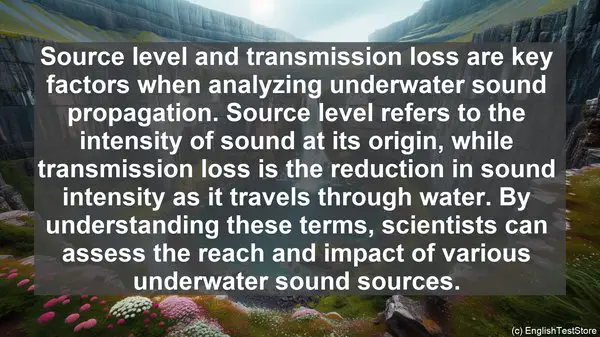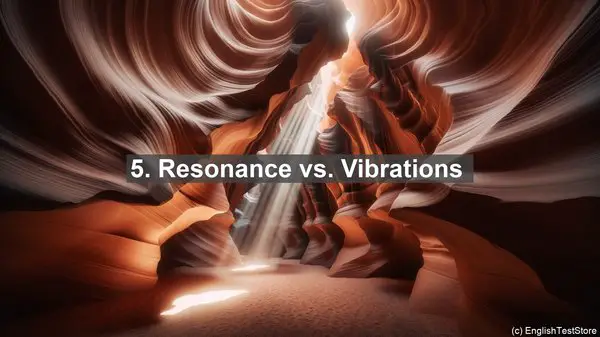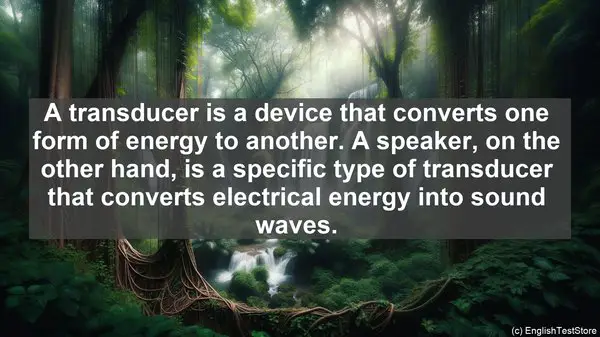Introduction: The Intricacies of Acoustic Oceanography
Welcome to today’s lesson on acoustic oceanography. This branch of oceanography focuses on studying the properties of seawater using sound waves. While it’s a captivating field, it also comes with its fair share of confusing terminology. In this lesson, we’ll unravel the top 10 commonly confused words, ensuring you have a solid foundation in this subject. So, let’s dive in!
1. Reverberation vs. Reflection
Reverberation and reflection are often used interchangeably, but they have distinct meanings. Reverberation refers to the persistence of sound in an enclosed space, while reflection is the bouncing back of sound waves when they encounter a boundary. In acoustic oceanography, understanding the difference between these terms is crucial for accurately interpreting data.
2. Frequency vs. Wavelength
Frequency and wavelength are fundamental concepts in the study of sound. Frequency refers to the number of oscillations per unit time, while wavelength is the distance between two consecutive points in a wave. In acoustic oceanography, these terms play a vital role in characterizing different types of sound waves and their behavior in water.
3. Source Level vs. Transmission Loss
Source level and transmission loss are key factors when analyzing underwater sound propagation. Source level refers to the intensity of sound at its origin, while transmission loss is the reduction in sound intensity as it travels through water. By understanding these terms, scientists can assess the reach and impact of various underwater sound sources.
4. Ambient Noise vs. Anthropogenic Noise
In the underwater world, noise isn’t limited to human activities. Ambient noise refers to the natural sounds present, such as waves and marine life, while anthropogenic noise is the result of human-made sources like ships and sonar. Distinguishing between these two types of noise is essential for studying the impact of human activities on marine ecosystems.
5. Scattering vs. Absorption
When sound encounters an object in water, two phenomena occur: scattering and absorption. Scattering is the redirection of sound waves in various directions, while absorption is the conversion of sound energy into heat. These processes influence how sound propagates in the ocean and are crucial for tasks like mapping the seafloor.

6. Snell’s Law vs. Ray Tracing
Snell’s Law and ray tracing are mathematical tools used to understand sound refraction in water. Snell’s Law relates the angles of incidence and refraction, while ray tracing involves tracing the path of sound waves. By employing these techniques, scientists can predict how sound will bend and travel in different underwater environments.
7. Hydrophone vs. Sonobuoy
Hydrophones and sonobuoys are both used to detect and record underwater sounds. A hydrophone is a stationary device that’s deployed in the water, while a sonobuoy is an expendable buoy that can be dropped from an aircraft. Each has its advantages, and choosing the right tool depends on the specific research or monitoring objective.
8. Doppler Effect vs. Doppler Shift
The Doppler effect and Doppler shift are phenomena related to the change in frequency of a wave when there’s relative motion between the source and the observer. The Doppler effect refers to this change in any type of wave, while the Doppler shift specifically applies to sound waves. These principles are vital for tasks like measuring ocean currents using sound.
9. Snapping Shrimp vs. Blue Whale
Snapping shrimp and blue whales may seem worlds apart, but they’re both important in acoustic oceanography. Snapping shrimp are tiny creatures that produce a distinctive snapping sound, which can interfere with underwater recordings. On the other end of the spectrum, the low-frequency vocalizations of blue whales can travel vast distances, providing insights into their behavior and distribution.

10. Acoustic Tomography vs. Passive Acoustics
Acoustic tomography and passive acoustics are techniques used to study the ocean. Acoustic tomography involves transmitting sound signals and analyzing their travel time to infer ocean properties. Passive acoustics, on the other hand, relies on listening to the natural soundscape. Both methods have their applications, and combining them can provide a comprehensive understanding of the marine environment.




